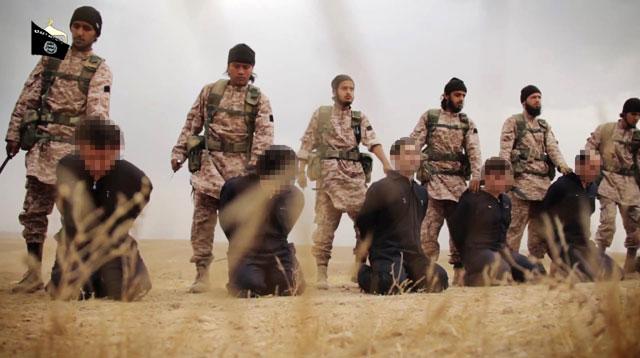You are here
Syria coalition says it killed Daesh leader linked to beheadings
By AFP - Dec 03,2018 - Last updated at Dec 03,2018

This file photo released by the Kassig Family on October 4, 2014, shows Peter Kassig with a truck, taken somewhere along the Syrian border between late 2012 and fall 2013, as Speical Emergency Response and Assistance was delivering supplies to refugees (AFP photo)
BEIRUT — The US-led coalition against the Daesh group said on Monday it killed a senior extremist involved in the executions of an American aid worker and other Western hostages.
Abu Al Umarayn was accused of involvement in the November 2014 beheading of Peter Kassig, a former US ranger who was doing volunteer humanitarian work when captured in 2013.
“He was killed and more information will be available after a full assessment,” Sean Ryan, spokesman for the US-led coalition, said in a statement issued after the Sunday strikes.
“Al Umarayn had given indications of posing an imminent threat to coalition forces and he was involved in the killing of American citizen and former US Army Ranger, Peter Kassig,” he said.
Ryan said the militant had also been involved in the execution of several other prisoners.
It is the first time the coalition, which has been hunting down Daesh fighters in Iraq and Syria since 2014, has announced the killing of an extremist leader linked to Kassig’s death.
At the time of the execution, Daesh released a video showing Kassig’s severed head but did not publish footage of the decapitation, as it had done for other hostages.
Syria’s official SANA news agency had earlier Sunday accused the US-led coalition of firing on Syrian army positions in remote eastern regions.
Regime targeted?
“The American coalition forces launched around 8:00 pm (1800 GMT) this evening several missiles against some positions of our forces in the Ghorab mountains south of Sukhna,” it said.
Quoting a military source, it said the bombardment had caused only material damage.
The Britain-based Syrian Observatory for Human Rights said coalition forces fired “more than 14 missiles” at a Syrian army convoy as it was passing through the desert.
“The group was lost in the middle of the desert around 35 kilometres from the Al Tanf base”, the observatory’s Director Rami Abdel Rahman told AFP.
The United States often uses this base to launch its strikes against Daesh extremists.
Ryan, the coalition spokesman, denied any strikes targeted the Syrian army.
“False, the strikes were as the report stated and directed at ISIS,” he said, using another acronym for the militants organisation.
Kassig founded a humanitarian organisation in 2012 that trained some 150 civilians to provide medical aid to people in Syria. His group also gave food, cooking supplies, clothing and medicine to the needy.
He took the name Abdul Rahman after converting to Islam.
His execution was part of a gruesome series of Western hostage beheadings that Daesh filmed and published to shock the world as it attempted to expand across the region.
2014 executions
Before Kassig’s decapitation, which Daesh announced on November 16, four other hostages were executed by Daesh:
- British aid worker Alan Henning (video released on October 3)
- British aid worker David Haines (video released on September 13)
- US journalist Steven Sotloff (video released on September 2)
- US journalist James Foley (video released on August 19)
Another hostage held at the time and whose execution was threatened was British journalist John Cantlie.
He later appeared in videos in which he uttered Daesh propaganda but, more than six years after his kidnapping, his fate remains unclear.
The leader of the cell which was responsible for the executions and became known as “The Beatles” was believed to be Mohammed Emwazi, a British militant nicknamed “Jihadi John” who was killed in a drone strike in 2015.
After expanding to control a self-styled “caliphate” straddling Syria and Iraq which was larger than Britain, Daesh suffered a string of military setbacks.
It has virtually no fixed positions left in Iraq and is now defending a few pockets in desert areas of Syria, including the region where Sunday’s strikes were carried out.
The other is the jihadists’ main active front in the Hajin area of Deir Ezzor province, where coalition-backed Kurdish-led fighters have been struggling to flush out a group of extremists making a fierce last stand.
The coalition has estimated around 2,000 extremists remain inside that pocket.
The international alliance, as well as the Syrian government and its Russian backers, have all repeatedly vowed to carry on the fight until achieving a full victory over Daesh.
But analysts have warned that fully eradicating the militants from those desert hideouts, where the state has a very limited footprint, could prove almost impossible.
Related Articles
The Islamic State group on Sunday released a video claiming the beheading of US aid worker Peter Kassig in a warning to Washington as it prepares to send more troops to Iraq.
Friends and former colleagues of a US aid worker whom the Islamic State (IS) group has threatened to execute appealed Saturday for his release.
BEIRUT — Heavy clashes between Daesh militants and US-backed forces in eastern Syria killed dozens of civilians and fighters in the past two












